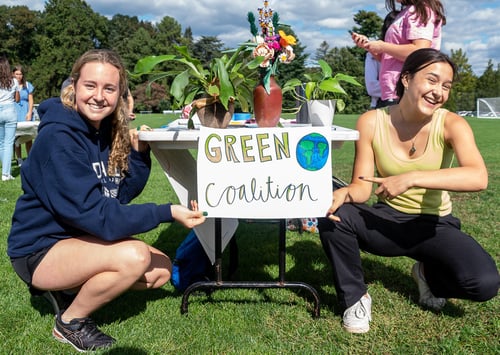 As a new member of the Sustainability Committee at Westtown School, I appreciate the conversations we share that have reminded me of simple ways we can all help our planet. It always amazes me how small changes in our everyday practices and behaviors can have such a positive impact on our environment. Below are a few reminders of the little steps we can all take.
As a new member of the Sustainability Committee at Westtown School, I appreciate the conversations we share that have reminded me of simple ways we can all help our planet. It always amazes me how small changes in our everyday practices and behaviors can have such a positive impact on our environment. Below are a few reminders of the little steps we can all take.
Reduce Food Waste
Aim to waste less food in your home. Did you know your food waste is not only tough on your wallet but also has negative effects on the environment?
- Food waste in landfills contributes to the release of methane, a powerful heat-trapping gas 21 times more harmful than carbon dioxide.
- Americans waste a staggering 40% of our food (NDRC, 2017 ) which is 10 times more than our peers in Southeast Asia or Sub-Saharan Africa.
- How can you reduce food waste?
- Plan meals in advance.
- Serve smaller portions and use smaller plates.
- Review refrigerator contents weekly and watch for items that you consistently waste.
- Buy produce and perishable items in small quantities so they do not spoil before you use them.
Challenge yourself (and maybe even your co-workers) to adopt a “No-Idling” Policy or practice. Next time you are picking up a child at school or waiting in the car as a friend grabs a cup of coffee, consider turning off your engine. Why, you might ask?
- Vehicular exhaust contains toxins known to cause respiratory ailments, birth defects, and many other serious health problems. The chemicals from exhaust are especially harmful to children who suffer from asthma, and can often worsen symptoms.
- Children waiting for an idling bus or car can be exposed to vehicular emissions. “Hot spots” occur when idling vehicles are concentrated in one area (such as school dropoff and pick-up locations).
- According to The U.S. Environmental Protection Agency, roughly 40% of air toxic emissions in the U.S. come from mobile sources such as cars.
- And to not overlook the obvious, a No-Idling Policy reduces fuel use and saves money.
A Bright Idea
Make the switch from incandescent to LED light bulbs. Yes, LED bulbs cost more but it is worth the investment for long-term savings and benefits to the environment. Did you realize…
- A typical 60-watt incandescent bulb uses almost 12 times the electricity as a 5-watt LED bulb for the same amount of light.
- Most incandescent bulbs need to be replaced about every two years compared to almost 12-year life for an LED bulb.
- You will pay more for the electricity required to light an incandescent bulb compared to what is needed to light an LED bulb.
- Many incandescent bulbs are labeled in ways that make you think you are making a sustainable choice. The packaging uses language which suggests they are energy efficient, though they use much more power than the alternative.
As I think back, it is hard to remember when we didn't recycle or carry a reusable water bottle. I have faith that we can adopt some new “green habits” so our children will have a hard time remembering waiting in a running car or using an incandescent light bulb. Let’s start making simple changes to our own lives that can help the future of our planet!



